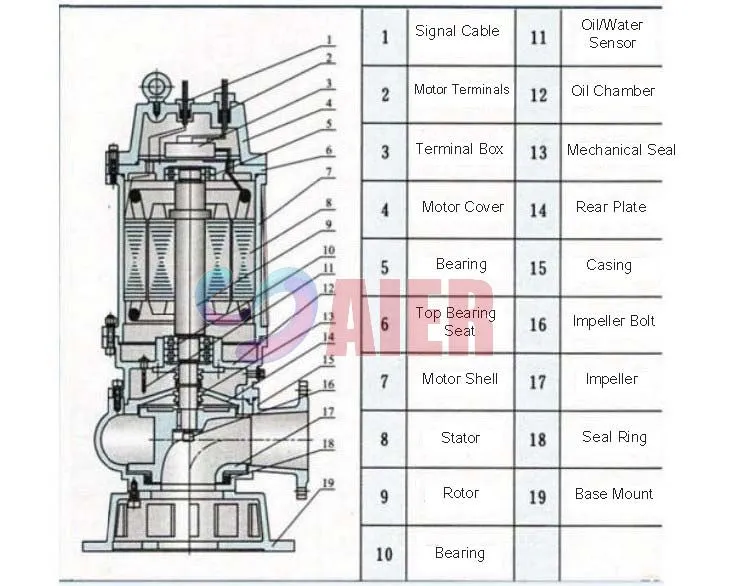Dec . 04, 2024 09:03 Back to list
horizontal froth slurry pump
Understanding Horizontal Froth Slurry Pumps An Overview
Horizontal froth slurry pumps are an essential component in various industries, particularly in mining and mineral processing. These pumps are specifically designed to handle thick, viscous slurries that contain a significant amount of froth or gas. The unique characteristics of frothy slurries present significant challenges for transporting materials, and this is where the specialized design of horizontal froth slurry pumps comes into play.
Design Features of Horizontal Froth Slurry Pumps
The horizontal froth slurry pump is engineered with a robust and durable design to withstand the abrasive nature of the materials it handles. The pumps typically feature a horizontal orientation, which allows for easier maintenance and a more straightforward installation process compared to vertical pumps. The design includes wear-resistant materials for key components like the casing, impeller, and housing to prolong the pump's lifespan and enhance operational efficiency.
One of the key features of horizontal froth slurry pumps is their ability to manage the presence of air within the slurry. Froth can occur in various processes, particularly in flotation, where bubbles are introduced to separate valuable minerals from waste material. The pump's design often includes features like a specialized impeller and volute that facilitate the handling of gas entrained in the slurry, ensuring a smooth flow without excessive cavitation or loss of efficiency.
Operational Principles
Horizontal froth slurry pumps operate based on the principle of converting mechanical energy into hydraulic energy. When the pump is activated, the impeller creates a centrifugal force that moves the slurry through the system. The unique design of the impeller allows it to effectively handle the frothy slurries, drawing the mixture in and expelling it through the discharge port.
The performance of these pumps is critically linked to several factors, including the slurry density, viscosity, and the amount of froth present. Operators must carefully monitor these variables to ensure the pump operates within its optimal range. Overloading the pump with excessive froth can lead to operational issues, such as reduced efficiency and increased wear and tear on components.
horizontal froth slurry pump

Applications of Horizontal Froth Slurry Pumps
These pumps find applications in several sectors, but they are most commonly used in the mining industry, particularly in the processing of ores. For instance, in the flotation process, where valuable minerals are separated from the ore using air bubbles, horizontal froth slurry pumps are vital in transporting the frothy mixture to further processing stages.
Additionally, they play a role in aggregate processing, as they can handle slurries produced from materials like sand and gravel. Moreover, industries that require the handling of waste materials, such as wastewater treatment plants, also benefit from the use of horizontal froth slurry pumps. Their ability to manage slurries with high solid content makes them a reliable choice in these applications.
Challenges and Considerations
While horizontal froth slurry pumps are effective in many situations, they are not without challenges. One significant concern is the potential for pump wear and maintenance issues due to the abrasive nature of the slurries they handle. Regular maintenance, including monitoring the condition of wear plates and impellers, is crucial to ensure longevity and optimal performance.
Additionally, operators must understand the specific characteristics of the slurry they are pumping. Factors such as particle size distribution, chemical composition, and temperature can all influence the pump's performance and efficiency. Therefore, it is essential for industries using these pumps to conduct comprehensive testing and analysis on their slurries before installation.
Conclusion
In summary, horizontal froth slurry pumps represent a critical technology in handling challenging materials in various industries. Their robust design and unique operational principles allow them to effectively manage frothy slurries, making them indispensable in applications ranging from mineral processing to wastewater treatment. Understanding their features, applications, and the challenges they face is essential for optimizing their performance and ensuring efficient operation in demanding environments. As technology continues to evolve, further advancements in pump design and materials will likely enhance the capabilities and efficiencies of these pumps, solidifying their role in fluid transportation across multiple sectors.
-
High Quality Submersible Slurry Pump with Agitator Manufacturer & Factory Reliable Submersible Pump Solutions
NewsJul.05,2025
-
Cheap Dredge Pump for Sale – China Cheap Submersible Pump for Wastewater Supplier
NewsJul.05,2025
-
Wholesale Casting Dredge Pump Part - High Quality China Manufacturers & Suppliers
NewsJul.04,2025
-
High Quality Slurry Pump Seals Reliable China Suppliers & Manufacturers
NewsJun.24,2025
-
High Quality Portable Submersible Slurry Pump Supplier & Manufacturer from China
NewsJun.10,2025
-
Slurry Pump Parts Manufacturer – High Quality Rubber Spare Parts from China
NewsJun.10,2025
